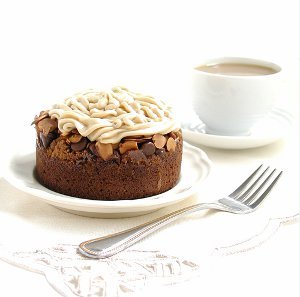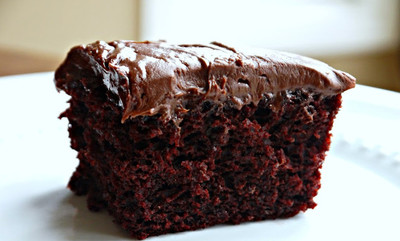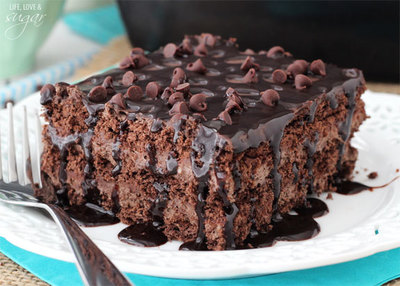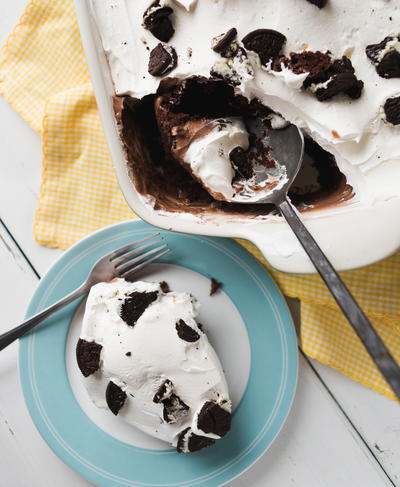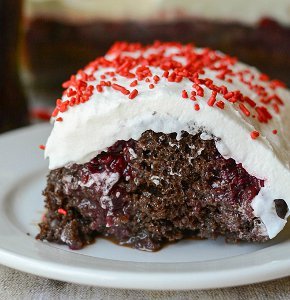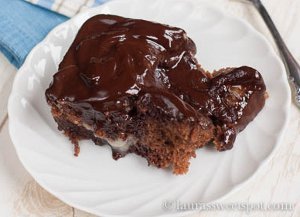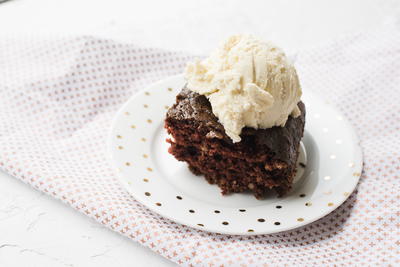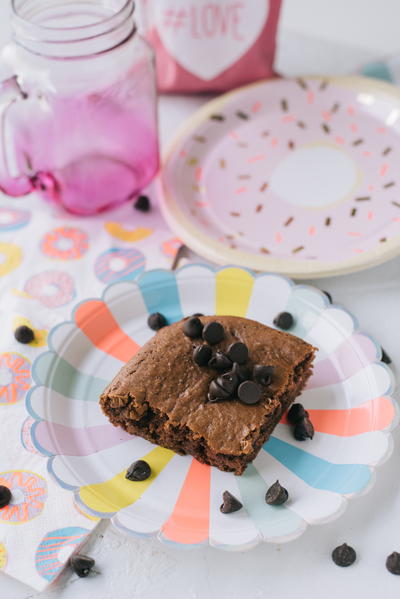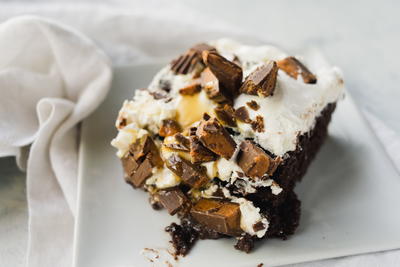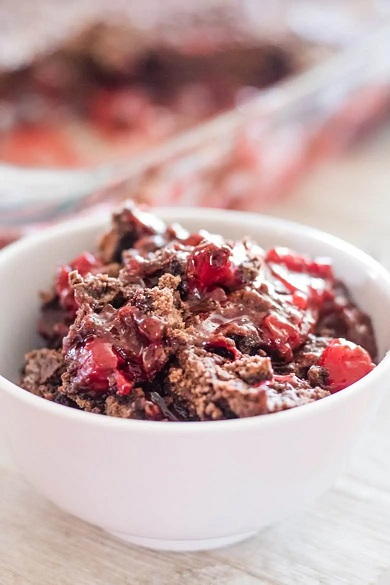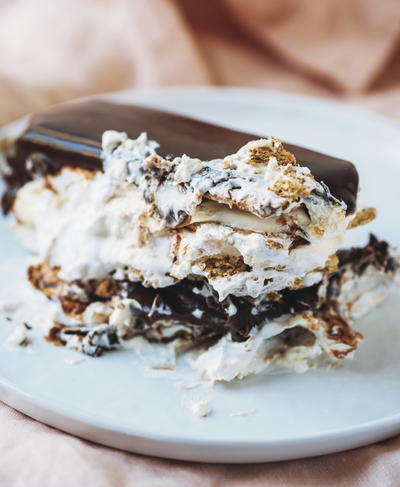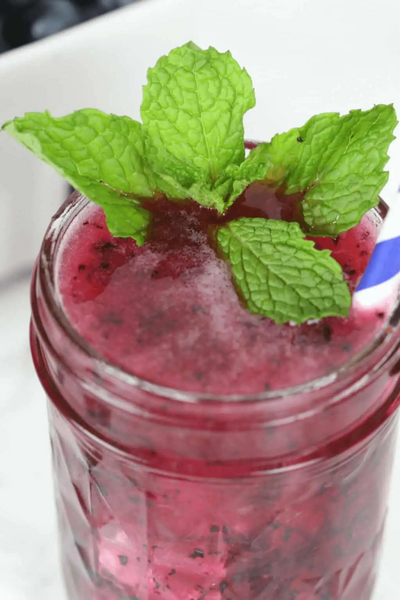Alhambra (chocolate hazelnut Sponge Cake)
Ingredients
- 2 ounces hazelnuts
- 2 ounces confectioners sugar
- 6 large egg yolks, at room temperature
- 1/2 cup plus 2 tablespoons sugar
- 3 large egg whites, at room temperature
- 1/8 teaspoon cream of tartar (optional)
- 1/4 cup plus 2 tablespoons all-purpose flour
- 1/4 cup unsweetened cocoa powder, Dutch processed
- 3/4 cup nut-and-sugar powder
- 3-1/2 tablespoons unsalted butter, melted and very hot
- 6 tablespoons sugar
- 3 tablespoons water
- 2 tablespoons plus 2 teaspoons dark Jamaican or Haitian rum
- 2 tablespoons plus 2 teaspoons water
- 7-1/2 ounces European bittersweet chocolate, chopped (see note)
- 3/4 cup heavy cream
- 4 tablespoons butter
- 12 ounces European bittersweet chocolate, melted (see note)
Instructions
Makes 10 to 12 servings. Note: If you choose a chocolate that is very low in sugar or very high in cocoa butter, you may want to increase the quantity of heavy cream in the ganache slightly or the amount of butter in the glaze so that the result won't be too firm. Preheat oven to 350 degrees. Spread out the hazelnuts loosely on a baking sheet, and roast nuts in preheated oven. Stir occasionally to move the nuts from the edge of the baking sheet to the center and prevent the nuts from browning unevenly. Roast until lightly browned in the center, about 15 to 25 minutes, depending on size of nuts. Pour nuts into a large sieve and rub them against the mesh--using a kitchen towel to protect your hands--to remove most of their skins. Pour nuts onto countertop and allow to cool. Combine the nuts with half the confections' sugar in a food processor. Process the nuts and sugar, stopping to scrape down the sides of the bowl and break up any caking as needed, until the nuts are finely ground, but not so long that the mixture becomes oily. Sift through a medium sieve--with 1/16- to 3/32-inch mesh. Return the nuts that don't pass through the sieve to the food processor with the remaining confections' sugar and process until the nuts have been reduced to a fine powder. Transfer all of the nut-and-sugar-powder to a bowl, break up any caking with your fingertips and mix thoroughly. Measure out 3/4-cup nut-and-sugar powder for cake, reserving any remaining for another recipe. Preheat oven to 350 degrees. Brush a 6-cup loaf pan with melted butter and dust with flour. Set aside. Combine the egg yolks with 1/2 cup of the sugar in an electric mixer and beat at medium speed until the mixture whitens. Pour the mixture into a large mixing bowl. Using a clean wire whip and bowl, whip the egg whites in the mixer at low speed until they start to froth. If you are not whipping the whites in a copper bowl, then add the cream of tartar. Gradually increase the whipping speed to medium-high, and continue whipping until the white form very stiff peaks and just begin to slip and streak around the side of the bowl. Add the remaining sugar and continue whipping at high speed for a few seconds longer to incorporate the sugar and tighten the meringue. Sift the flour and cocoa powder together over the egg-yolk mixture. Scoop about one-third of the meringue on top and quickly and thoroughly mix it in with a rubber spatula. Add the remaining meringue and gently fold it into the batter. When almost completely incorporated, add the hazelnut-and-sugar powder and continue folding until completely mixed. Slowly pour the melted butter over the batter and fold it in. Scoop the batter from the mixing bowl into the loaf pan, filling it to three-fourths of its height. Smooth the surface and make a slight depression down the center. Place the loaf pan on a baking sheet. Bake until the top of the cake is dry and firm to the touch but not crusty, about 35 to 40 minutes. The tip of a paring knife inserted in the center of the cake should come out clean. Remove the cake from the oven and slide the tip of a paring knife or small icing spatula between the edge of the cake and the pan to loosen the edge. Let the cake rest in the pan for about 5 minutes. Unmold the cake onto a wire rack. Turn it upside-down and let cool to room temperature. Combine sugar and 3 tablespoons water in a small saucepan and bring to boil, stirring occasionally to dissolve all the sugar. Cover and allow the syrup to cool. Mix cooled syrup with rum and remaining water. Set aside. Place the chocolate in a small stainless-steel bowl. In a small, heavy saucepan, bring the cream just to a simmer, between 165 degrees and 185 degrees. Reduce the heat and sterilize the cream by simmering it for at least two minutes, stirring constantly with a wire whisk to prevent the cream from boiling over. Gradually pour the hot cream into the chocolate, stirring constantly with a wire whisk. Continue stirring with the whisk until the chocolate is completely melted and the ganache is smooth. (If all of the chocolate does not melt, dip the bottom of the bowl of ganache in a bowl of hot water and stir until the ganache is smooth.) Allow the ganache to cool, stirring occasionally. Use the ganache when it thickens but before it sets. Or store, covered airtight, up to one week in the refrigerator. To use, remove from refrigerator one hour before using. When it has warmed to room temperature, place it in a stainless-steel bowl and briefly warm the bottom of the bowl over direct heat, stirring constant with a wooden spatula. Remove it from the heat and beat it vigorously with the spatula. Return it to the heat and repeat as often as necessary to make the ganache smooth and spreadable but not runny. Place the butter in a butter melter or small saucepan and melt it over low heat, while stirring. When the butter is melted, remove it from the heat and skim off the foam (which contains the whey proteins) that comes to the surface. Let rest for a few minutes to allow all of the milk solids to settle to the bottom. Pour the clear yellow liquid--the clarified butter--through a very fine sieve into a bowl, leaving the milky residue (the protein casein and some salts) at the bottom of the saucepan. Measure 3-1/2 tablespoons of clarified butter and reserve for glaze, saving any remainder for another use. Slice off the bottom of the cake with a wavy-edge bread knife to make it flat. Turn it right side up and cut it horizontally into three layers. Place the bottom layer on a matte board or foil board rectangle. Brush the top of this layer heavily with the rum brushing syrup. Spread 1/4 cup of the ganache over it with an icing spatula. Brush the bottom of the middle cake layer with rum syrup, turn it right-side up, and place it on the first layer of ganache. Brush the top of this layer heavily with rum syrup and spread it with 1/4 cup of the ganache. Brush the bottom of the third cake layer heavily with rum syrup, turn it right-side up, and place it on the second layer of the ganache. Lightly brush the outside of the loaf with rum syrup. Spread the top and then the sides of the loaf with ganache, leaving a rim of ganache around the top edge of the loaf. Sweep the icing spatula across the top to take off the excess ganache and make it smooth. Slide the loaf to the edge of your countertop and sweep the icing spatula over the side in turn until the entire outside of the cake is coated with a smooth layer of ganache. Transfer the cake to a wire rack and chill it in the refrigerator until the ganache is firm, at least 1 hour. If you did not melt the chocolate for the glaze in a stainless-steel bowl, transfer it to one. Temper the chocolate as follows: Dip the bottom of the bowl of chocolate in a larger bowl of cold water and stir the chocolate until the temperature drops to between 80 degrees and 84 degrees and it begins to thicken. Immediately remove from the cold water and dip the bottom of the bowl of chocolate in a larger bowl of hot water. Stir over the hot water just long enough to warm the chocolate to between 86 degrees and 91 degrees and make it more fluid again. Then remove from the hot water immediately. Beat the clarified butter with a wooden spatula to make it smooth and creamy, then stir it into the chocolate. Pour the chocolate on top of the cake in a rectangle just inside the perimeter so that some of it flows naturally over the edges. Quickly smooth the top surface with an icing spatula to cover the entire top with a thin layer of glaze and make the excess flow evenly down the sides. Pour additional chocolate glaze over any areas that may need it, and tilt and tap the wire rack to be sure the chocolate flows evenly over the entire surface. Touch up any uneven areas around the sides with the edge of the icing spatula. Let the chocolate begin to thicken, then clean off any excess chocolate around the bottom edge. Transfer the cake to a serving plate and let the chocolate glaze set. Gradually stir the heavy syrup into the melted chocolate. The chocolate will thicken and will probably seize, becoming thick and granular. Keep adding heavy syrup until the chocolate becomes smooth and fluid again. Add only as much syrup as necessary to make this "writing chocolate" smooth and soft enough to pipe from a parchment decorating cone. Spoon 1 tablespoon of the writing chocolate into the parchment decorating cone, fold over the back end to close it, and cut the tip. Pipe a scroll pattern around the rim of the cake and write "Alhambra," or an inscription of your choice, across the center. Refrigerate until the writing chocolate inscription has set.

